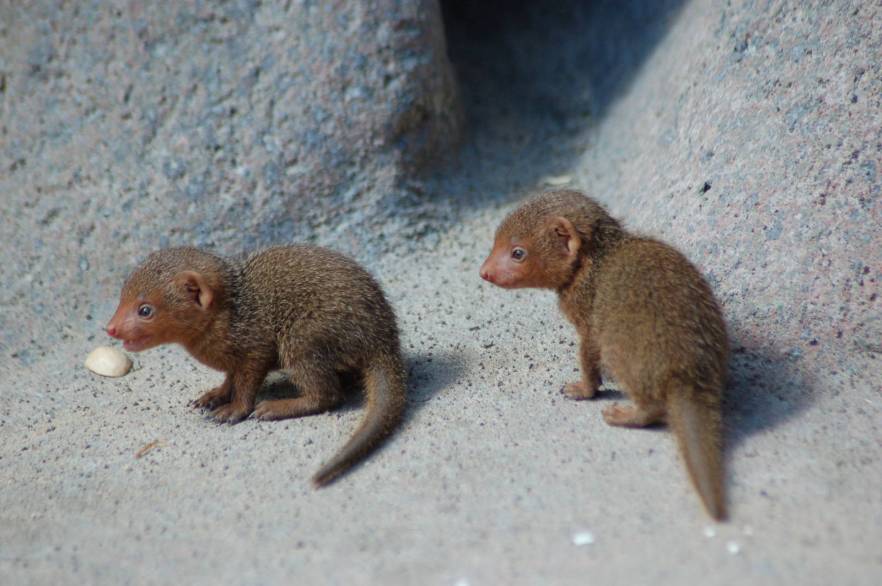
Reproduction
Unlike most other social mongoose species, all females in a banded mongoose group can breed. They all enter oestrus around 10 days after giving birth, and are guarded and mated by 1–3 dominant males. The dominant males monitor the females and aggressively defend them from subordinates. While these males do most of the mating, the females often try to escape from them and mate with other males in the group. A dominant male will spend 2–3 days guarding each female. A guarding male will snap at, lunge at or pounce on any males that come near. A non-guarding male may follow a guarding male and his female and may face this aggression. Non-guarding males mate in a more secretive way.[7] This kind of “sneaking” behavior is similar to what subordinate males of the fish species Neolamprologus pulcher do; they also try to mate with females that are guarded by the dominant males.
Gestation is 60–70 days. In most breeding attempts, all females give birth either on the same day or within a few days. Litters range 2–6 pups and average 4. For their first four weeks of life, pups stay in the dens. At this time they are guarded at the den by 1–3 babysitters while the other group member go on their foraging trips.[12] After four weeks, the pups are able to go foraging themselves. Each pup is cared for by a single adult “escort” who helps the pup to find food and protects it from danger.[13] Pups become nutritionally independent at three months of age.
Inbreeding avoidance
Inbreeding depression is largely caused by the homozygous expression of deleterious recessive alleles.Inbreeding depression appears to occur in banded mongooses as indicated by a decline in progeny body mass with increasing inbreeding coefficient.This finding suggests that avoiding breeding with close relatives would be beneficial. Successfully breeding pairs were found to be less related than expected under random mating.This mating bias appears to be driven by both male mate choice and female control of paternity. Both sexes of banded mongoose likely use kin discrimination to avoid inbreeding.
Interspecies relations
In some locations (e.g., Kenya) banded mongooses have been found in close relationship with baboons.They forage together and probably enjoy greater security as a large group because of more eyes on the lookout for predators. The mongooses are handled by baboons of all ages and show no fear of such contact.
Banded mongooses have been observed removing ticks and other parasites from warthogs in Kenya and Uganda. The mongooses get food, while the warthogs get cleaned.